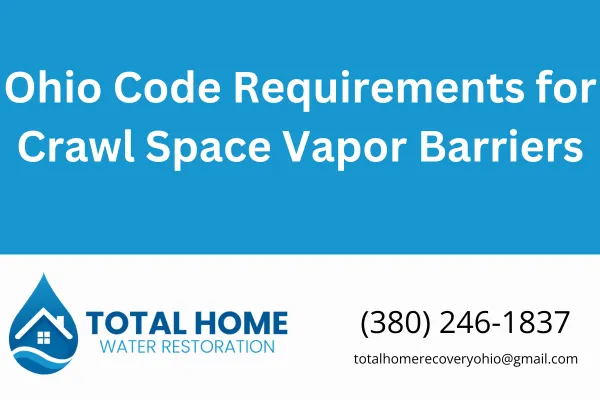
Ohio Code Requirements for Crawl Space Vapor Barriers
Ohio Code Requirements for Crawl Space Vapor Barriers
If you've found water damage, mold, or musty smells in your crawl space, you're not alone. We see this often here in Central Ohio—especially in older homes without proper vapor barriers. Let's break down what the Ohio building code says about crawl space vapor barriers and what you actually need to keep your home dry, safe, and up to code.
Do I Really Need a Vapor Barrier in My Crawl Space?
Short answer: Yes, if your crawl space has exposed earth.
Ohio follows the International Residential Code (IRC) with state-specific amendments. Section R408.2 in the 2021 IRC (which Ohio has adopted) clearly states:
“The exposed earth in unventilated crawl space areas shall be covered with a continuous vapor retarder.”
Here’s what that means in plain English:
If your crawl space has a dirt floor, you need a plastic vapor barrier over it.
That barrier needs to cover the entire ground surface with no large gaps.
Joints must overlap at least 6 inches.
Edges should extend up the walls and be secured.
This is not optional. It’s about moisture control and preventing long-term damage.
Why It Matters
We've torn out a lot of moldy insulation and rotten wood from crawl spaces that were never sealed properly. The vapor coming up from the ground leads to:
Mold growth in joists and subfloors
Sagging floors
High indoor humidity
Musty odors throughout the house
And if you're dealing with allergies or asthma? Crawl space mold can make things worse.
How We Install to Code
At Total Home Water Restoration, we install 6-mil to 20-mil polyethylene vapor barriers, depending on your needs and the condition of your crawl. Here’s what a standard install looks like:
Clean and level the ground
Lay down overlapping sheets of vapor barrier
Seal seams with specialized tape
Extend up walls and secure with mechanical fasteners or adhesive
Optionally, insulate the walls or floor system depending on if the crawl space is vented or not
We follow all Ohio building code requirements for R408 and beyond.
Bonus Tip: Don’t Skip Drainage
Even a perfect vapor barrier won’t help if water is still getting in. We always inspect for:
Gutter or downspout issues
Negative grading around the foundation
Cracked foundation walls
Sometimes we recommend a sump pump or interior drain tile if groundwater is a concern.
FAQ
Q: Do all crawl spaces in Ohio require a vapor barrier?
A: If the ground is exposed, yes. Finished, encapsulated, or slab-floored crawl spaces have different rules.
Q: Can I install a vapor barrier myself?
A: You can, but a lot of DIY jobs miss critical sealing steps. We often get called to fix these later.
Q: Will my home pass inspection without a vapor barrier?
A: Likely not, especially if you're selling or remodeling. It's a common red flag.
If you're unsure whether your crawl space is up to code, call us at 380-246-1837. We’ll inspect it, give you straight answers, and handle everything the right way.
From disaster to done right—we fix it like it’s our own home.
Total Home Water Restoration
4141 Hoover Rd, Grove City, OH 43123
Phone: 380-246-1837
